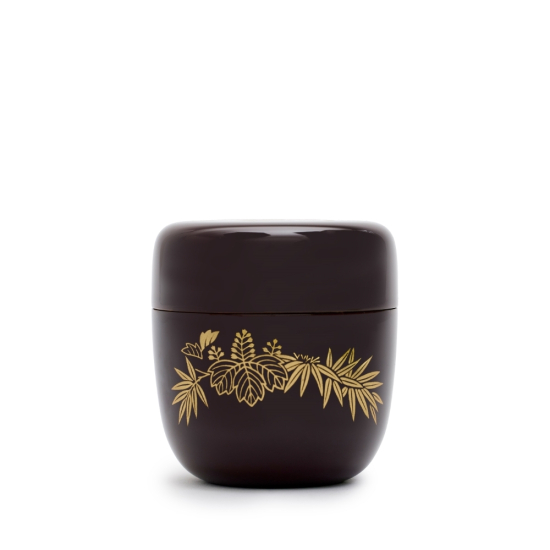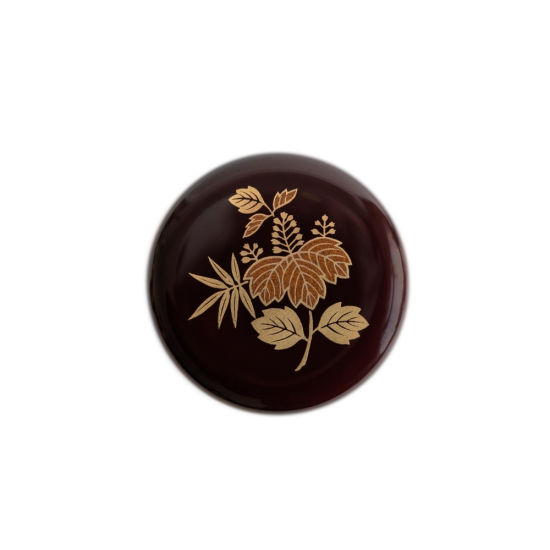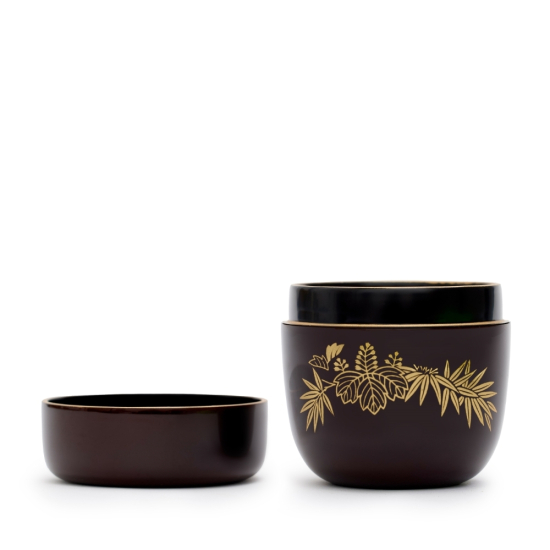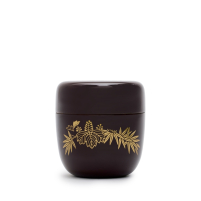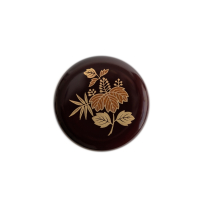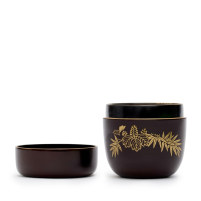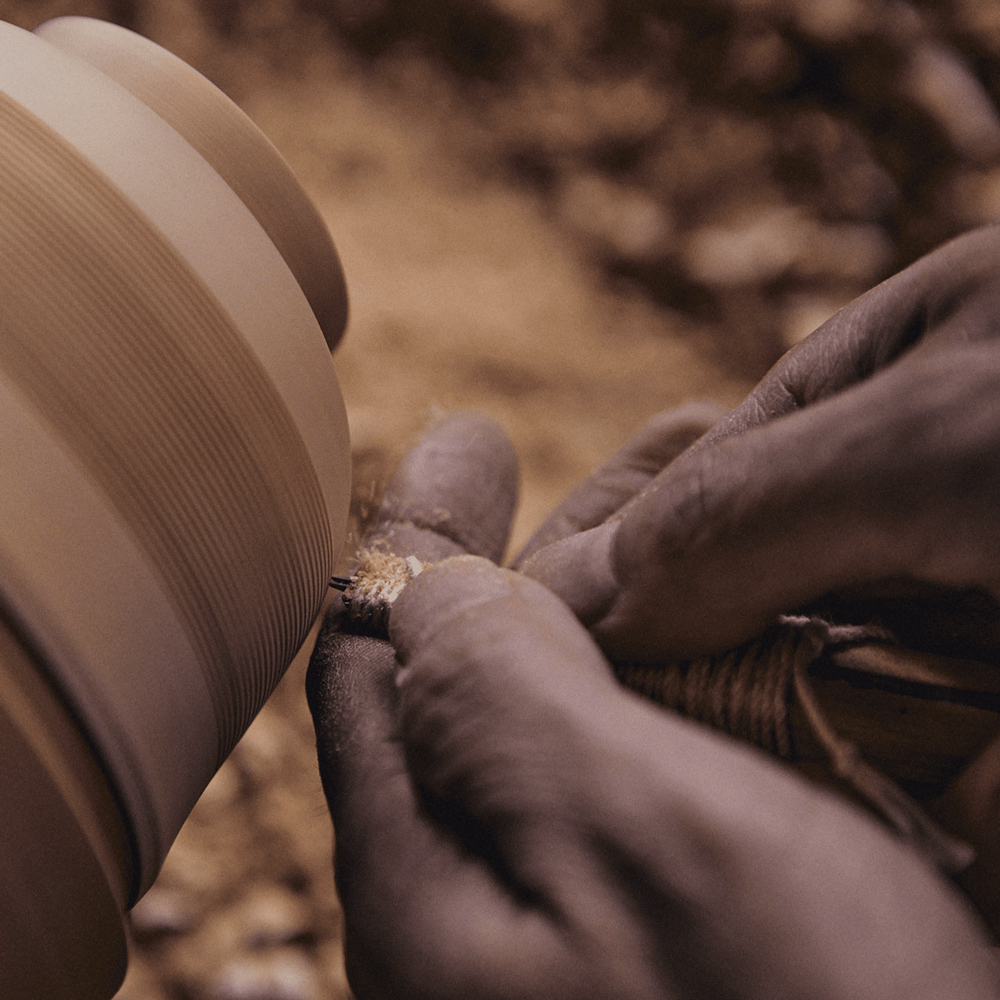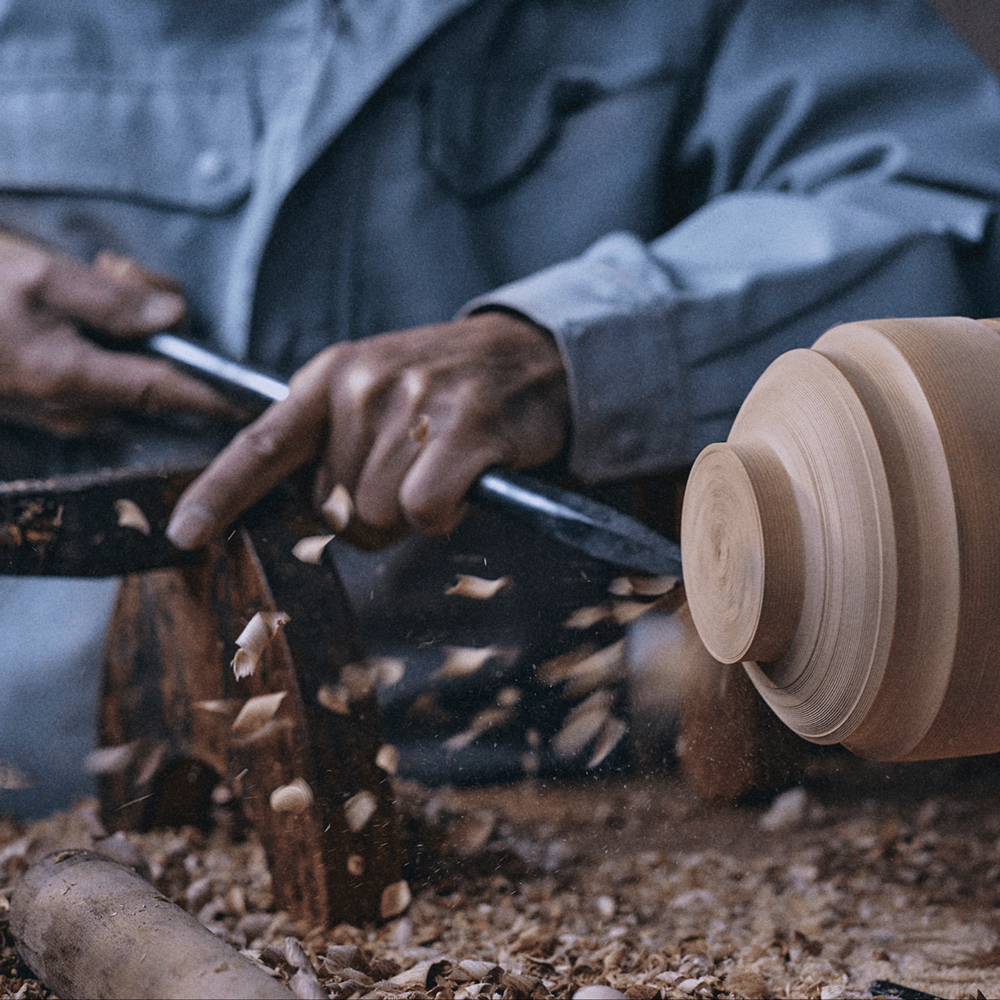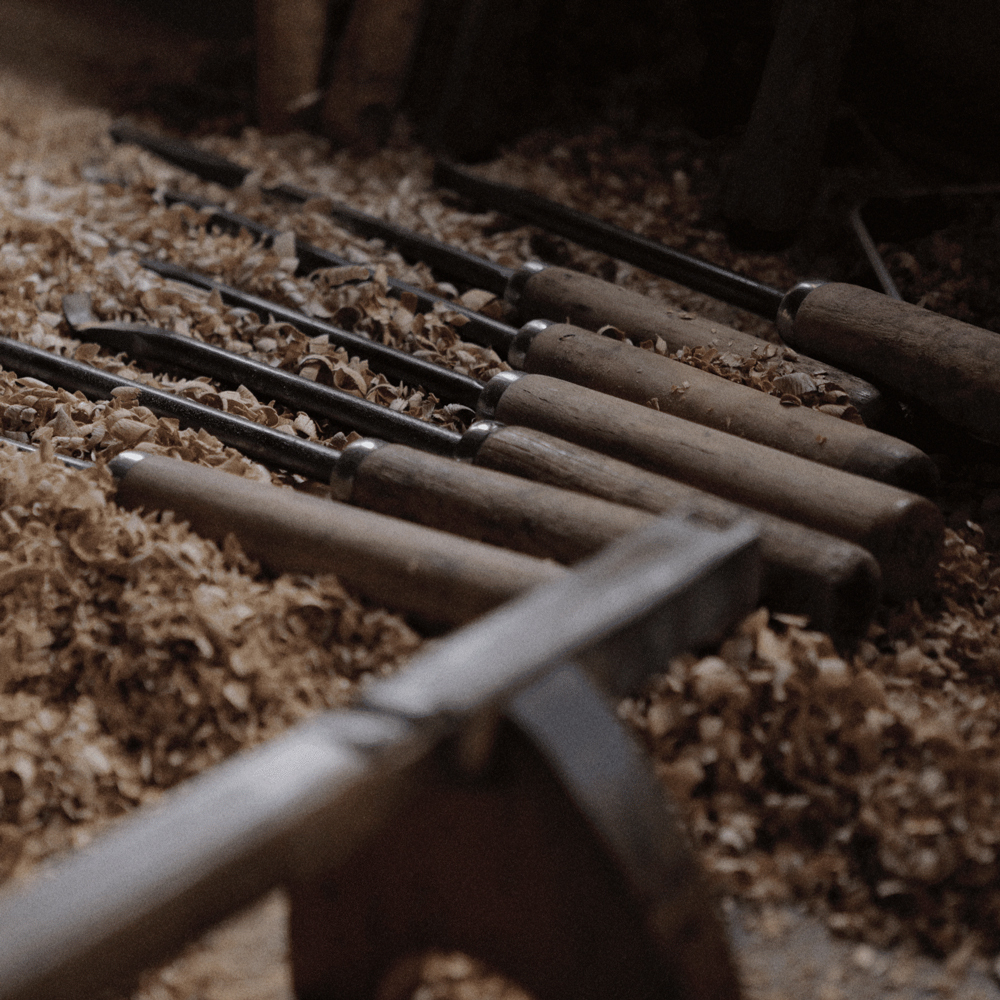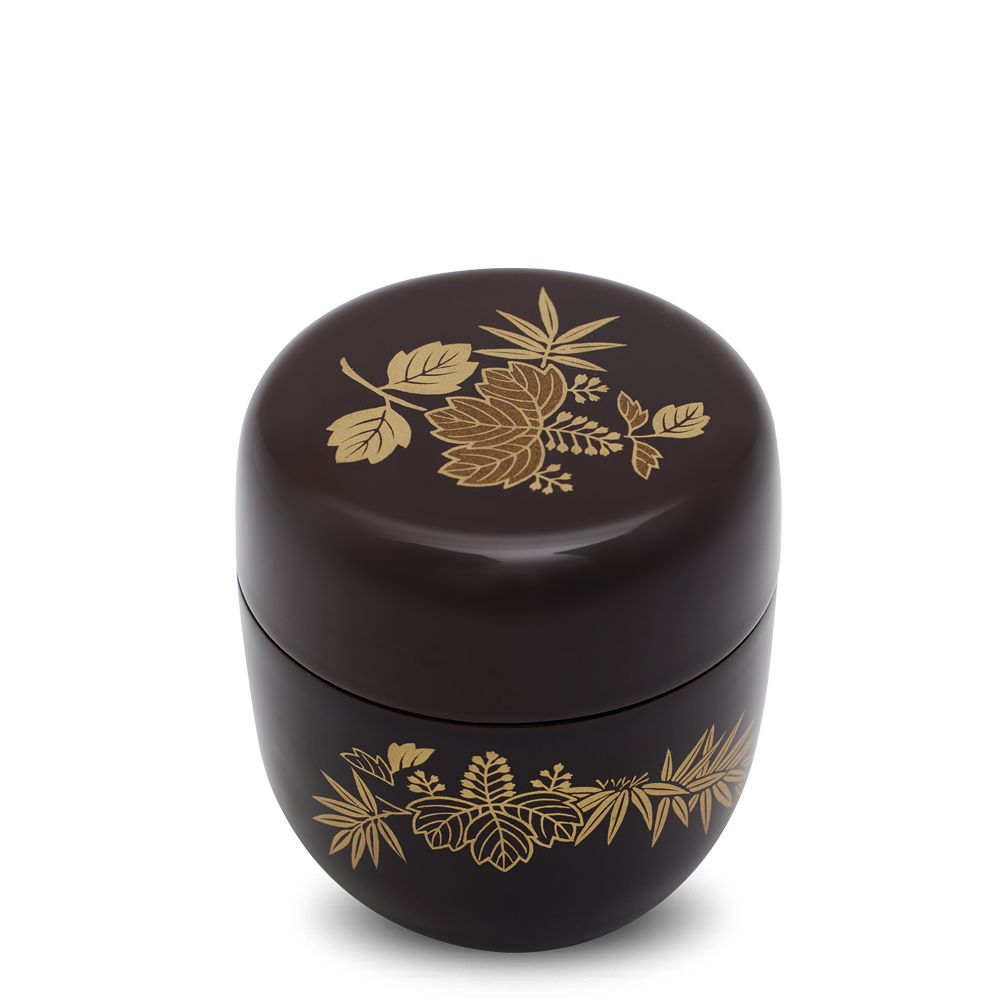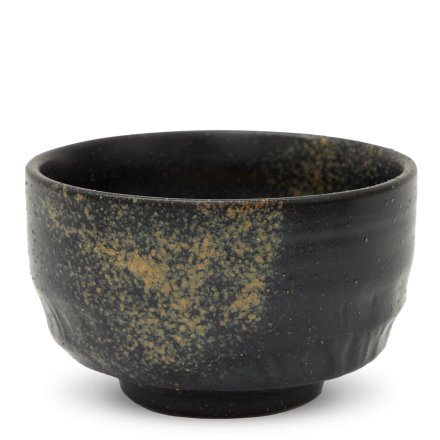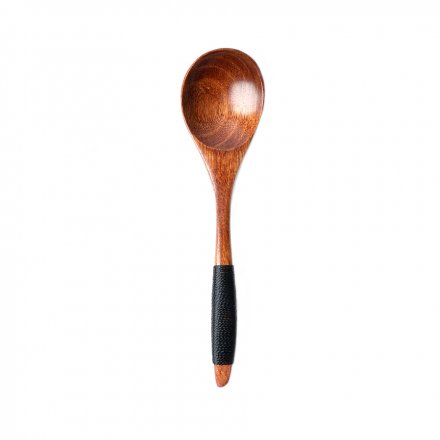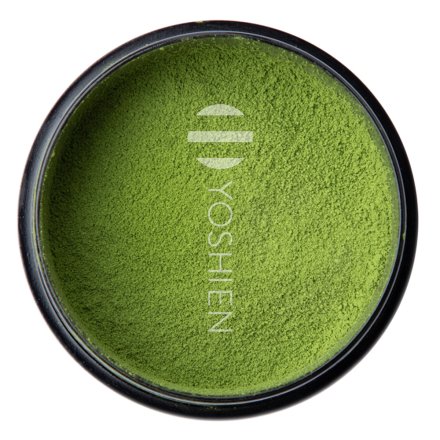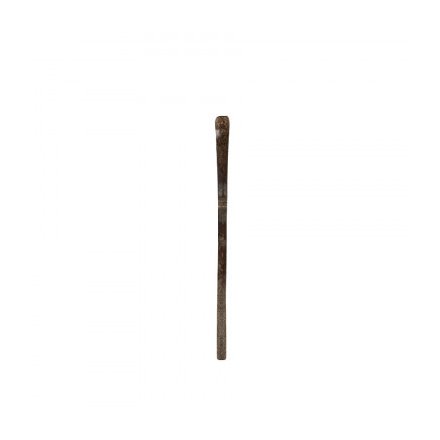Japanese lacquer, or Urushi, is the purified sap of the Asian lacquer tree, which has been used for thousands of years in Japan to coat objects from crockery to furniture and buildings. When dry, the lacquer is both heat and water resistant, providing protection and strength to underlying materials: very often wood, but also bamboo, paper and leather. Pure Urushi is transparent, while the black and red lacquers most associated with Japanese lacquerware, or Shikki (漆器, lit. "Urushi utensil"), are achieved with the addition of mineral pigments. On top of this, decorative details such as Maki-e (蒔絵) “sprinkled pictures” or Raden (螺鈿) “shell inlay” may be applied.
Natsume
Sasagiri
Yamanaka
SKU
0199
A sophisticated Chu-Natsume in a rich maroon hue, decorated with a gold Maki-e design of bamboo grass and paulownia: a popular Japanese motif since the Momoyama period (1573-1600). Coated in natural Urushi lacquer applied using the two coat Tame-nuri technique, this standard size Natsume can be used all year round.
| Item | Ceremonial Matcha container |
|---|---|
| Type | Chu-Natsume (中棗) |
| Origin | Yamanaka, Ishikawa, Japan |
| Colour | Maroon, gold |
| Dimensions | Ø6.6 x 6.9cm |
| Material | Magnolia obovata |
| Lacquer | Urushi |
| Decoration | Maki-e |
| Motif | Bamboo grass (笹 sasa), paulownia (桐 kiri) |
| Packaging | Gift box |
Each piece is handmade and unique, therefore colour and decoration may vary slightly
In stock



